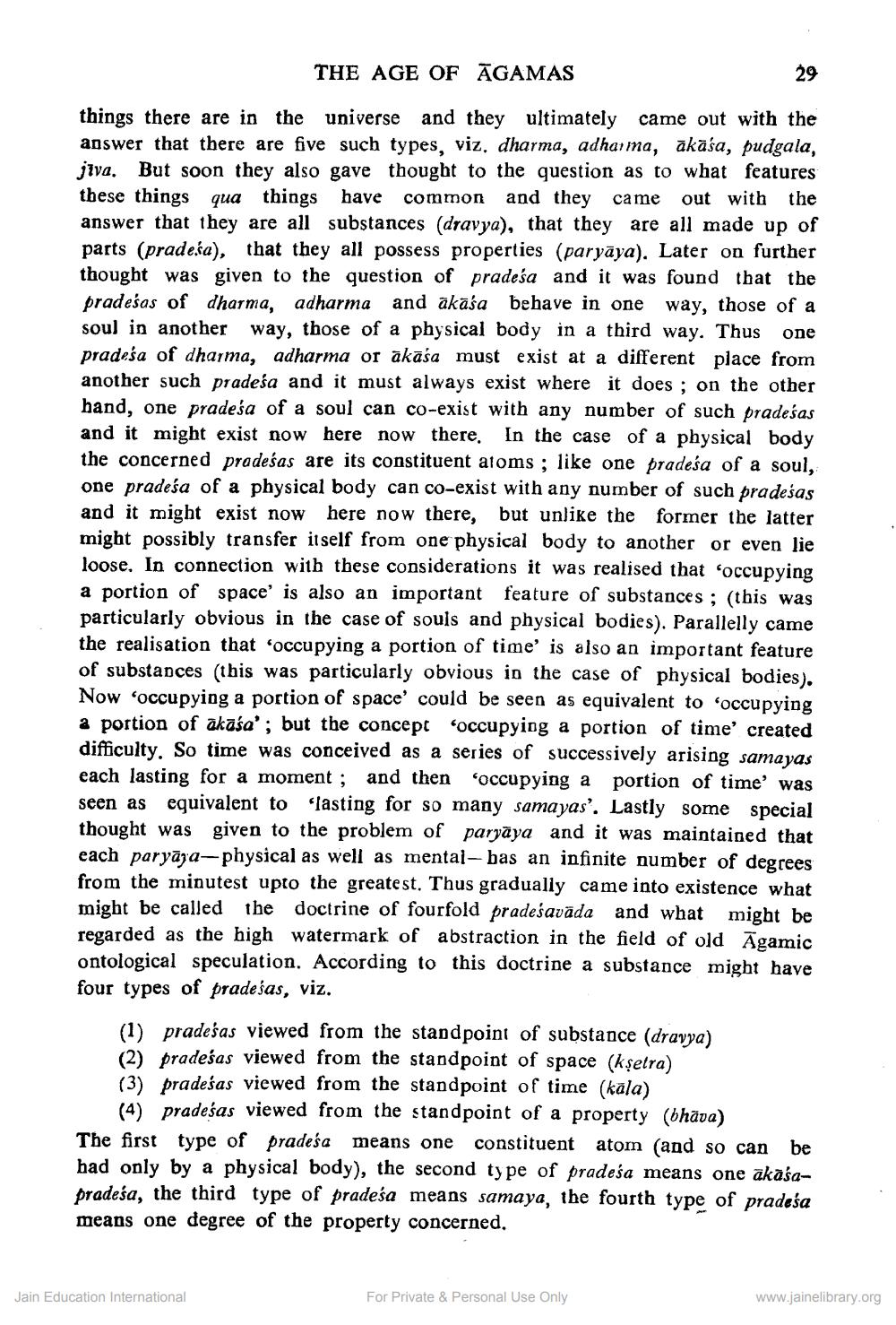________________
THE AGE OF ĀGAMAS
things there are in the universe and they ultimately came out with the answer that there are five such types, viz. dharma, adharma, akāśa, pudgala, jiva. But soon they also gave thought to the question as to what features these things qua things have common and they came out with the answer that they are all substances (dravya), that they are all made up of parts (prade.sa)that they all possess properties (paryāya). Later on further thought was given to the question of pradeśa and it was found that the pradeśas of dharma, adharma and akaśa behave in one way, those of a soul in another way, those of a physical body in a third way. Thus one pradeśa of dharma, adharma or akāśa must exist at a different place from another such pradeśa and it must always exist where it does ; on the other hand, one pradeśa of a soul can co-exist with any number of such pradeśas and it might exist now here now there. In the case of a physical body the concerned pradeśas are its constituent atoms; like one pradeśa of a soul, one pradeśa of a physical body can co-exist with any number of such pradeśas and it might exist now here now there, but unlike the former the latter might possibly transfer itself from one physical body to another or even lie loose. In connection with these considerations it was realised that “occupying a portion of space' is also an important feature of substances ; (this was particularly obvious in the case of souls and physical bodies). Parallelly came the realisation that 'occupying a portion of time' is also an important feature of substances (this was particularly obvious in the case of physical bodies). Now 'occupying a portion of space' could be seen as equivalent to 'occupying a portion of akaśa'; but the concept occupying a portion of time' created difficulty. So time was conceived as a series of successively arising samayas each lasting for a moment; and then “occupying a portion of time was seen as equivalent to lasting for so many samayas'. Lastly some special thought was given to the problem of paryāya and it was maintained that each paryāga-physical as well as mental- bas an infinite number of degrees from the minutest upto the greatest. Thus gradually came into existence what might be called the doctrine of fourfold pradeśavāda and what might be regarded as the high watermark of abstraction in the field of old Āgamic ontological speculation. According to this doctrine a substance might have four types of pradeśas, viz.
(1) pradeśas viewed from the standpoint of substance (dravya) (2) pradeśas viewed from the standpoint of space (kşetra) (3) pradeśas viewed from the standpoint of time (kala)
(4) Pradeśas viewed from the standpoint of a property (bhāva) The first type of pradeśa means one constituent atom (and so can be had only by a physical body), the second type of pradeśa means one ākāśapradeśa, the third type of pradeśa means samaya, the fourth type of pradeśa means one degree of the property concerned.
Jain Education International
For Private & Personal Use Only
www.jainelibrary.org




